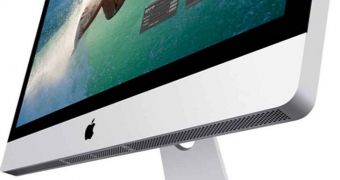OS X Yosemite is a treasure trove of information pointing to Apple’s direction with the desktop business, which now appears to include Retina-display iMacs. References to super-high resolutions found inside the code of OS X 10.10 stand as testimony that future all-in-one Apple computers will offer an insane pixel count.
The Retina iMac is, without a doubt, in the cards for future hardware upgrades. It’s not a matter of if, but a matter of when Apple will deliver them.
A standard that is already beginning to lose its flair, Retina is slowly becoming ubiquitous and you can count on Apple to use it in bigger displays once the manufacturing prices are on par with the company’s sought profit margins.
Relayed on a forum in France, the discovery was made in / System/Library/Displays/Overrides/DisplayVendorID-610 / Yosemite DP1.
A rough translation to English reads: “...a new file with respect to 10.9.4, entitled DisplayProductID-AE03. [...] The first of these resolutions indicates hexa "00001900 00000e10" is therefore a resolution scaling of ... 6400 x 3600 (probably a 3200x1800 HiDPI). Continues and is 5760x3240 (2880x1620 HiDPI) 4096x2304 (2048x1152 HiDPI), etc.”
The only Retina-enabled Macs available today are MacBook Pros. The first in line to get the upgrade is the MacBook Air, as Retina displays are still expensive and their price only goes higher with every extra inch. A 12-inch model is said to be in the works.
Retina displays are still expensive, and manufacturers like LG, Samsung, and Sharp are struggling to churn out enough of them every year. In other words, don’t expect Apple to rush out Retina iMacs just yet. Chances are the company is only preparing the software to match hardware planned for 2015.
Regardless of when this is poised to happen, Apple is yet to introduce its biggest product upgrades for 2014. This fall, the company is expected to announce a special event during which it will introduce the iPhone 6, an updated version of the Apple TV, new processor upgrades for the Macintosh line, and perhaps even the iWatch.
It’s reasonable to assume that the Mac maker will divide these announcements across two separate events, especially if there are some new iPads in the cards for 2014.
Some say Apple will deploy the iPhone 6 in August, leaving the rest of the announcements for September or October. The company usually schedules events three or four months apart, but there have been exceptions where two Apple events were less than a month apart.

 14 DAY TRIAL //
14 DAY TRIAL //